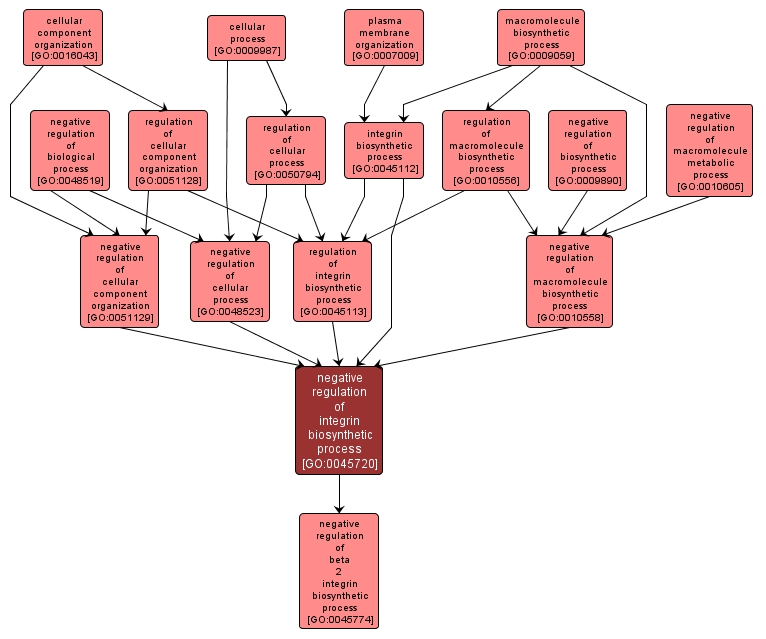GO TERM SUMMARY
|
| Name: |
negative regulation of integrin biosynthetic process |
| Acc: |
GO:0045720 |
| Aspect: |
Biological Process |
| Desc: |
Any process that stops, prevents or reduces the frequency, rate or extent of the chemical reactions and pathways resulting in the formation of integrins. |
Synonyms:
- negative regulation of integrin synthesis
- negative regulation of integrin anabolism
- down regulation of integrin biosynthetic process
- negative regulation of integrin formation
- inhibition of integrin biosynthetic process
- down-regulation of integrin biosynthetic process
- negative regulation of integrin biosynthesis
- downregulation of integrin biosynthetic process
|
|

|
INTERACTIVE GO GRAPH
|














